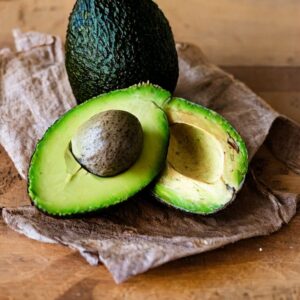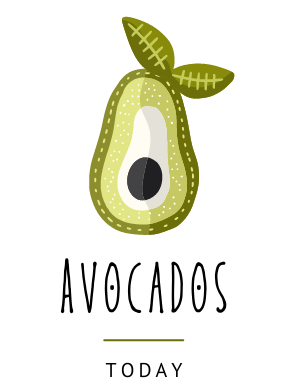You go to make your famous guacamole, only to find brown streaks running through the green avocado flesh. The question crosses your mind – can you eat a browning avocado? At first glance it may look unappetizing, but don’t let some oxidation scare you off just yet! When an avocado browns after being cut open, it doesn’t necessarily mean it has gone bad. Read on to learn what causes avocados to brown, how to tell if a browning avocado is still edible, and tips for saving your precious avo.
Why Do Avocados Turn Brown After Cutting Them Open?
It’s kind of crazy how a vibrant green fruit can become a muddy mess in minutes. It’s actually due to a totally normal chemical reaction between the inside of the avocado and the oxygen in the air.
See, as soon as you cut into an avocado, special enzymes activate and kick the oxidation process into high gear. It’s like a tiny switch flips on telling the fruit to start browning. These enzymes are in overdrive near the pit and the skin.

Once exposed to oxygen, the enzymes start interacting with chlorophyll (the green pigment) and other substances called polyphenols (compounds that promote health found in many veggies and fruits).
The enzymes break chlorophyll and polyphenols down, essentially killing their color. Like when a leaf changes from green to red or orange in the fall, the pigments in an avocado break down into a dull brown hue.
Can You Eat A Browning Avocado?
While a browned avocado might not win any beauty contests, chances are it’s still perfectly safe to eat. That’s because the browning is caused by oxidation, a natural chemical reaction that occurs when certain enzymes within the fruit are exposed to air.
The chemical changes are superficial and do not immediately induce decay or create any toxic compounds. As long as the browned flesh does not become slimy, take on foul odors, or grow mold, it is generally still safe to eat. While oxidation may impact taste and texture, you can often still enjoy the flavor underneath those unappealing brown spots.
How Long Can You Keep a Cut Avocado Before It Browns?
The oxidization process happens quickly once an avocado is exposed to air. Browning typically begins within 10 minutes and will intensify over the next few hours. That doesn’t mean all browned avocados are inedible, but it does mean you’ll want to use cut avocado right away to enjoy its freshest taste and texture.
Does Cooking a Browning Avocado Make It Safe to Eat?
Cooking methods like baking, sautéing, or blending avocado in sauces or dips can help mask unpleasant textures or flavors from oxidation. However, cooking cannot get rid of toxic molds or bacteria that causes avocado spoilage. If the avocado shows signs of being rotten, it should not be eaten cooked or raw.
Can You Freeze Browning Avocado to Stop Oxidation?
Freezing sliced avocado in an airtight container is an option for preserving it once browning begins. The cold temperatures slow down enzymatic activity leading to discoloration. Thaw frozen avocado before using and taste a small amount before consuming or cooking. Off flavors may develop during freezing.
Does Adding Lemon Juice Prevent Avocado from Browning?
Yes, citrus juice contains antioxidants that can temporarily slow down the enzymatic browning process. Sprinkle lemon, lime, or orange juice over exposed avocado flesh then store in an airtight container in the fridge to keep it greener longer. Just don’t expect juices to prevent browning forever.
Should You Peel and Pit Avocados Before Cutting to Limit Browning?
Peeling and removing the pit from an avocado before slicing or dicing it can be beneficial for reducing oxidation. This method minimizes the amount of time the flesh is exposed directly to air after being cut open. The longer the avocado flesh sits out in contact with oxygen, the faster browning occurs.

By taking the peel and pit off first, you can then cut up the avocado flesh while still having the ability to place it into an airtight container or lemon juice mixture immediately. This reduces contact between the vulnerable avocado enzymes and air. The peel and pit also contain higher concentrations of phenolic compounds that can accelerate browning. Removing them ahead of time eliminates this.
However, leaving the peel and pit on too long can also be detrimental if the avocado is ripe and ready to eat. The intact skin prevents oxygen from reaching the flesh but produces ethylene gas that speeds up ripening. An uncut ripe avocado left sitting with peel and pit will overripen quickly. It’s a balance of reducing air exposure while still enjoying peak ripeness. Plan to peel, pit, cut, and store your ready-to-eat avocados soon after purchasing for best results.
How to Tell If Your Avocado Has Gone Bad
However, not all browned avocados can be saved. Here are a few signs that indicate yours is over the hill:
- Brown streaks inside before you cut it open – This likely means bruising or cold damage during storage.
- You can try to scoop around the brown parts.
- Stem and top very dark – If the area near the stem is very mushy and brown, mold could be the culprit. Best to discard moldy parts.
- Watery texture and foul smell – Avocados that are truly spoiled tend to get slimy and give off an unpleasant odor. When in doubt, throw it out.
- Dry, stringy flesh – Extremely overripe avocados start to dry out and lose their rich, creamy texture. At this point, it’s not worth trying to resurrect it.
If mold is present, toss the whole fruit. When in doubt, it’s better to be safe than sorry and avoid eating questionable avocados.
Storing Avocados to Prevent Browning
The key to keeping your avocados green longer is proper storage. Here are some avocado saving tips:

- Leave unripe avocados at room temperature – Don’t refrigerate them until they fully ripen. The cold breaks down the cells faster.
- Use fruit preservers – Spritzing cut surfaces with lemon or lime juice can slow oxidation.
- Seal tightly – Press plastic wrap directly on the exposed flesh before refrigerating to limit air exposure.
- Buy treated avocados – Some like Apeel avocados have an edible extra outer layer that keeps moisture in and oxygen out.
How to Tell When an Avocado is Perfectly Ripe
Waiting until an avocado is just right before cutting into it keeps the browning at bay. Judge ripeness with these tricks:
- Press the stem – It should come off easily when ready. Green underneath means good to go. Brown means give it more time.
- Check for soft give – Apply gentle pressure. A slight indent indicates prime ripeness. Rock hard or mushy is over or underripe.
- Examine the color – Green is ideal, while black or very dark skin means overripe. Color varies for different avocado varieties though.
In Summary
the answer to “Can you eat a browning avocado?” is often yes, despite its unappealing look. The harmless enzymatic oxidation that causes avocados to turn brown after exposure to air does not make them immediately inedible. Look for other signs of spoilage like foul odors, extreme mushiness, or mold to determine if your browning avocado should be tossed.
With proper handling and storage, the development of brown spots and streaks does not necessarily mean you cannot eat a browning avocado. While discoloration affects taste and texture over time, an avocado that has started to brown can often be enjoyed if it shows no other indications of being rotten. So inspect your browning avocado closely, but don’t let a little oxidation scare you away from salvaging those delicious green guts.
And FYI, if you really don’t feel like eating a mushier-than-normal avocado, they make great face masks. Just crush them in a bowl and gently massage them into your skin for all their skin-softening benefits!

